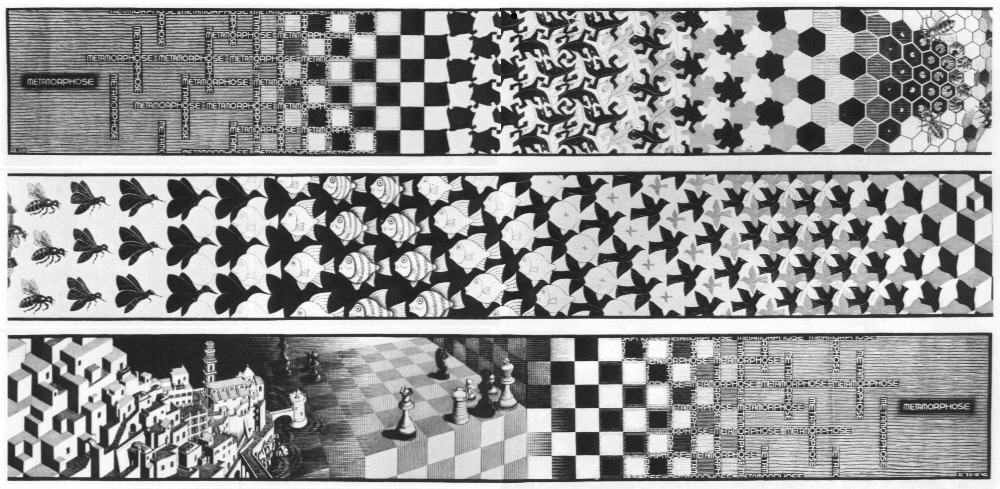One of the main themes of Godel, Escher, Bach (GEB) is the process of transmitting meaning through different forms. This is one of the reasons formal systems were created; to structurally organize interpreted meaning into a usable form. Mathematics itself can be thought of as a huge collection of formal systems, some of which are meant to express abstract principles (pure mathematics), and some that are tools that assist us with making calculations of real-world situations (applied mathematics). Hofstadter includes a formal system of his own making that operates the same way as addition, though he uses different symbols.
The existence of isomorphisms is necessary to the creation of a formal system, or at least one that is meant to have an interpretation or application in the real world. Hofstadter defines isomorphisms as information-preserving transformations. I like to think of them as almost a sort of transportation device that moves information from one form to another.
Isomorphisms are almost constantly present in our lives without our conscious realization of them. All of our five senses can be thought of as isomorphisms. The eyes receive the input of visible light, then transduce the electromagnetic radiation into neural signals to be sent to the brain. The ears transform vibrations in the air into our experience of sound. The nose and tongue use different mechanisms to receive the properties and configuration of various chemicals, then preserve that information in the form of a neural network of signals. And sensory receptors throughout our bodies receive pressure and heat stimuli, which they use to communicate to the brain what is happening in the outside world.
Beyond that, we use isomorphisms as tools to accomplish innumerable tasks. As you read these words, the cognitive networks in your brain are converting the otherwise meaningless figures known as letters into the experience of understanding concepts real and abstract. You may be listening to a CD, whose microscopic convoluted substructure is being read by an audio player and transformed into the sonic vibrations of a speaker unit, which in turn is being translated by the brain into the physical and emotional perception of music. And ever since the day you were conceived, an army of RNA polymerase and ribosomes has grown and multiplied and worked tirelessly to translate DNA into RNA and then into protein to build the complete, complex, complicated biological organism that houses your consciousness (since the part of you that matters wasn't made by any simple nucleic acid or enzyme). Isomorphisms are inescapable.
The above picture, Liberation by artist M.C. Escher, illustrates a transformation of one form to another. The title suggests that it's meant to be viewed from bottom to top, as if the birds above are being freed from their restrictive form below. But what if we made a slight alteration to this work? If we renamed it Capture, would it be interpreted differently? From freedom to bondage?
Capture is exactly what much of modern applied science has done and will do until everything is known. The natural phenomena that became interpreted as Newton's laws of motion, Le Chatelier's principle of dynamic equilibrium, the laws of thermodynamics, the central dogma of molecular biology, Kepler's conjectures of planetary motion, Kubler-Ross's five stages of grief, the Darwinian perspective of evolution, and thousands more were all "captured" to some extent from their free position in the universe to the human's world of pen and paper. But how well were they captured? How much information was accurately preserved? Looking back at Escher's Liberation, how far down can you go before the birds aren't really birds anymore?
In reality, the workings of the universe are so much bigger than any theorem, conjecture, or law that we try to use for capture. It's going to be a long time before we understand everything; much less express or use that knowledge intelligently. Few isomorphisms are perfect. Information is almost always lost in translation. But even if the birds are more beautiful than the triangular prisons we hold them in, the snares allow us to use the rigidity of form while retaining our appreciation for the unlimited.


No comments:
Post a Comment